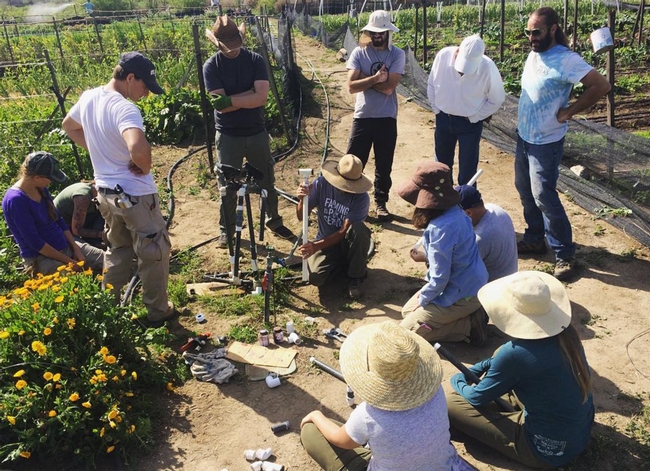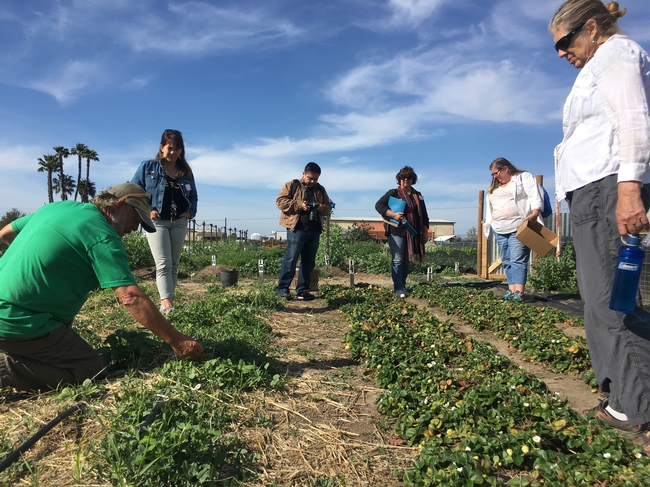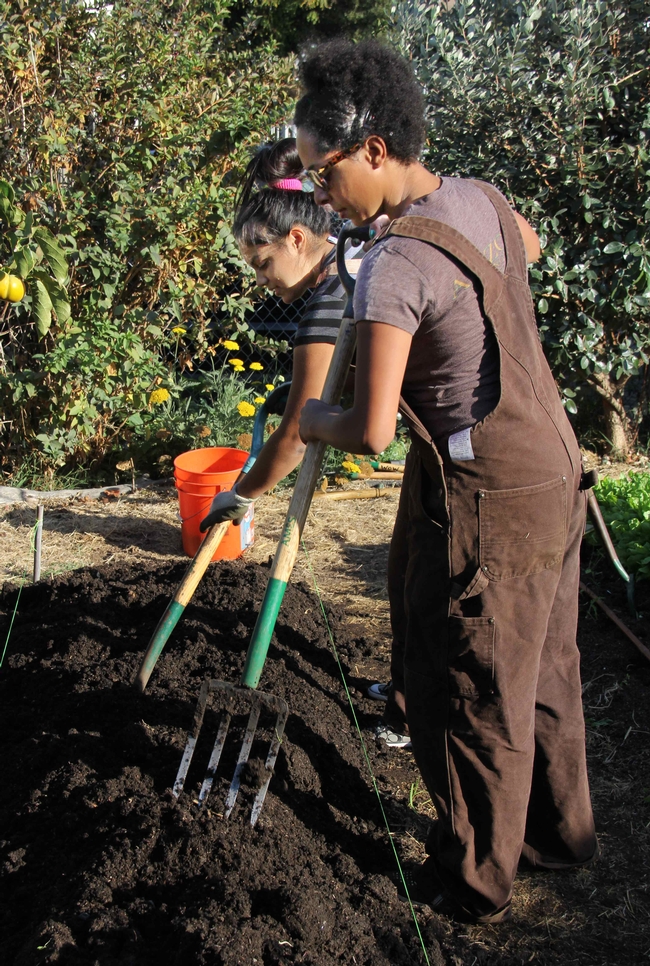
Without understanding the actual links between UA and food security or which specific characteristics, models or approaches reduce insecurity, urban policymakers and advocates risk backing policies that could have unintended consequences or negative impacts on vulnerable individuals and communities. We argue that in addition to more robust analyses that measure the actual social, economic, and health impacts of urban agriculture, and how they impact food security, it is important to understand which approaches to policy, governance and civic engagement support UA models that are effective in reducing food insecurity.
In general, we see three trends in current scholarship on UA in relation to community food security: (1) a focus on the production potential of urban lands, (2) individual case studies highlighting various nutritional, health, and other community benefits or outcomes from urban gardening initiatives, and (3) more critical analyses of UA through food justice and equity lenses. To this latter point, robust theoretical analyses have emerged critiquing the risks of UA when approached without an equity lens, potentially reinforcing structural injustices and racism and negatively impacting communities that ideally should benefit the most.
Deeper historical and structural challenges including poverty, racism, and divestment in specific communities and neighborhoods are increasingly being recognized as the root causes of the problem of unequal access to sufficient supplies of safe, nutritious, affordable, and culturally acceptable food facing cities. Designating land for agricultural use in urban areas may conflict with other city planning priorities around affordable housing, community economic development, or smart growth approaches associated with reducing urban sprawl and mitigating climate change, such as transit-oriented development. Because of the persistent legacy of systemic discrimination, it is neither inevitable nor guaranteed that urban agriculture will redress food system inequities; in fact, urban farms can sometimes lead to displacement through eco-gentrification. This is a particularly acute concern in areas experiencing housing pressures and population growth, such as the San Francisco Bay area and New York City.
Analyzing the intersection of food access and food distribution literatures reveals three key factors mediating the effect of UA on food security in the urban food system:
(1) the economic viability of urban farms (to sustain the provisioning of affordable urban produced foods)
(2) the role of city planning and policies in advancing racial equity through UA such as secure land tenure and public investment, and
(3) the importance of civic engagement to advocate for and hold cities and counties accountable to the needs of low-income communities.
We highlight examples from both the scholarly and gray literatures that demonstrate how UA can improve food access, distribution, and justice, in a way that supports both consumers and producers of food in cities. The gray literature in particular reveals many emerging and informal distribution networks for urban produced foods that would benefit from further academic study, such as gleaning networks, distribution apps, and online platforms.
The review concludes with a set of recommendations for researchers, practitioners, and policymakers who seek to create spaces in cities for food justice, equity, access, and sovereignty. Most notably we acknowledge that urban farms are producing a lot more than food; and that equitable planning, public investment and civic engagement are crucial elements in securing the long-term viability of urban farms. More robust analyses documenting the multifaceted benefits and risks of UA such as public health, food security, youth development, food literacy, eco-gentrification and environmental justice can help inform more equitable public policy and planning efforts.
- Author: Niamh Quinn
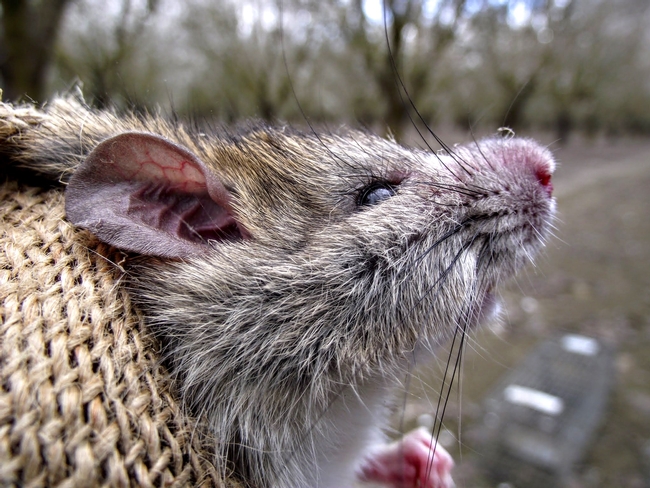
Managing rodents in and around school and community gardens can be difficult. One of the easiest ways to keep many rodents at bay is to remove their food source. Given that the main purpose of a garden is to grow food, it would be counter-intuitive to remove the food. However, there are many management options available to people working in gardens that are trying to protect their food from rat damage.
Habitat modification and sanitation
Making sure that the landscape surrounding your garden is well maintained may help with the management of rats. Lots of cover in the form of landscaped shrubs, trees, untrimmed palm trees etc. can provide a lot of harborage for rats to live in. These should be trimmed up and off the ground and should not be densely planted if they are in the area. Compost can provide ample harborage for rats. It is recommended to not compost food in the immediate vicinity of your garden and any other green waste should be attended to regularly to make sure that rats do not establish colonies in compost piles. Feeding of wildlife is illegal in the State of California. Therefore, the provision of food for any wildlife is illegal. The provision of food is not only illegal but it can also induce secondary pest problems like rodent outbreaks. The feeding of feral cats should also be strongly discouraged, particularly in areas where their feces could contaminate soils and other food.
Trapping
Trapping can be a very useful tool for the management of rats in gardens. If you have a rat problem in your garden it is important to be realistic about the number of snap traps that will be required to manage the issue. One or two snap traps will not curb a population. It is important to saturate an area with snap traps. Consider trapping at multiple levels also (inside beds, outside beds, on the ground, on fence lines etc.). Please be mindful of other community garden volunteers. It is important to let them know where snap traps are to reduce the risk of injury on encountering a snap trap. If you are working in a school, snap traps can be set in the evening and checked in the morning before the children get to the garden. Snap traps should not be set in gardens during the day when children are present unless they are secured in trapping stations that can be provided under contract from a pest management professional. Snap traps can also capture nontarget wildlife such as birds and reptiles. Please be mindful of these when setting traps. Nontarget mortality can be reduced by trapping only at night or by using trapping stations that can exclude nontarget wildlife. It is not advised to live-trap any wildlife in a garden. Once you trap a rat, under law, you must either release it right where you captured it, or euthanize it humanely.
Rodenticides
The use of rodenticides to manage rats in and around gardens is actually not considered legal. The majority of rodenticides available for purchase for unlicensed applicators are for structural use only. It is permitted to have rodenticide in gardens as long as you are using it to control rodents that are invading a man-made structure such as a shed, storage barn, or building. All rodenticides that are registered to manage rats must be applied in bait stations no more than 50ft away from the man-made structure, although some labels permit going further away (up to 100ft).
Placement of snap traps: (a) single trap with trigger next to wall; (b) the double set increases your success; (c) double set placed parallel to the wall with triggers to the outside.
Adapted from The Rat: Its Biology and Control, Howard, W. E., and R. E. Marsh. 1981. Oakland: Univ. Calif. Div. Agric. Sci. Leaflet 2896
- Author: Penny Leff
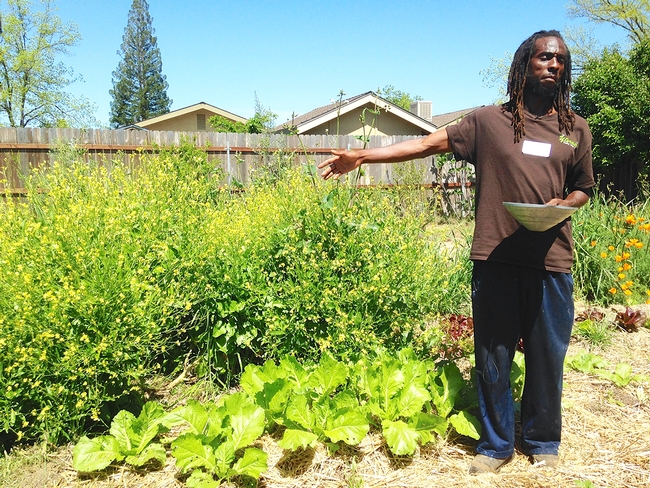
Yisrael farm produces healthy food for the Yisrael family and their community. More importantly, Chanowk and Judith help to grow a healthy community by sharing their skills and knowledge, offering classes, workshops and programs for youth, and teaching others how to grow their own food and cook healthy meals. Their mission is to “transform the hood for G.O.O.D.” (G.O.O.D. stands for “Growing our own Destiny") using urban agriculture as a tool for community engagement, empowerment and employment. They demonstrate the benefits of growing your own food and principles of cultivation of the soil which they share with their local community and the world.
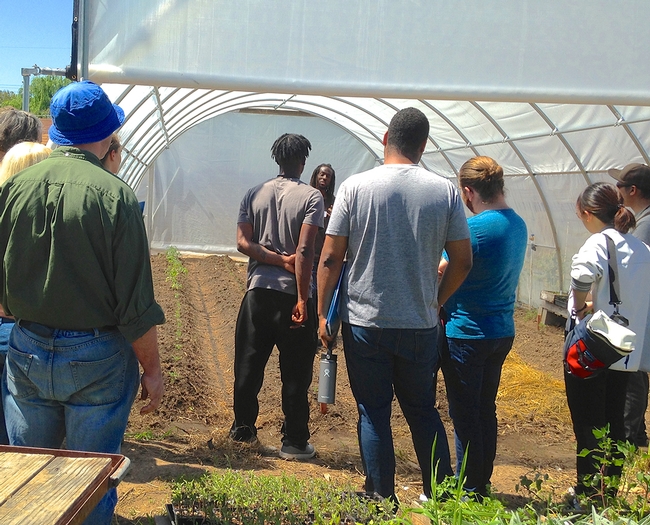
The Yisrael family now raises 45 to 50 percent of their own food, and distribute some of their crops informally in their community. In 2017, they raised about 4000 pounds of food and hosted about 1500 visitors. Yisrael Farm operates an urban farm stand, selling directly from the farm to visitors. Farm stand products are fresh produce, farm-raised eggs, jams produced under a cottage food registration, and soaps and other body care products made using farm products. Marketing the food produced on the farm is not a major part of Yisrael Family Urban Farm's program. The major focus of Yisrael Farm is education. Programs and events and classes are marketed through the website, Facebook, Twitter and through community partners.
Good rich soil grows nutritious crops. Chanowk Yisrael has spent more than ten years building the soil at Yisrael Family Farm, using natural methods including composting, double-digging, cover-cropping and low-till techniques. The farm soil is now distinctively rich and loose and healthy, enabling the growth of abundant healthy food.
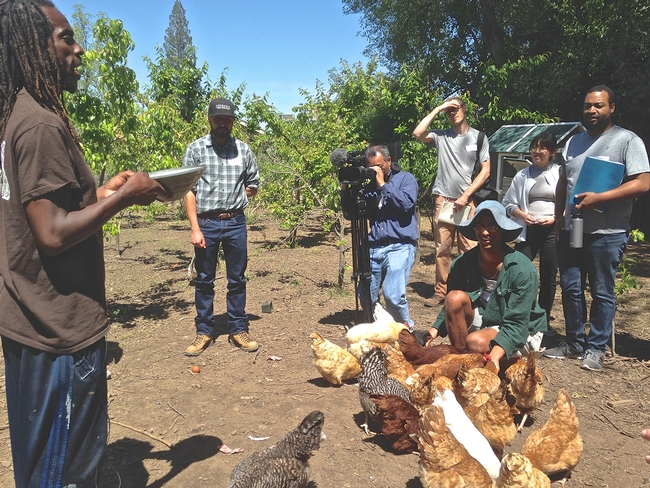
Learn More
Address:
4507 Roosevelt Avenue, Sacramento, CA 95820
Website:
http://www.yisraelfamilyfarm.net/
Social Media links:
https://www.facebook.com/yisraelfarm/
Videos:
http://lecture.ucanr.edu/Mediasite/Play/9113f0a530c14549ab1410d614c5f0131d
http://lecture.ucanr.edu/Mediasite/Play/f9dfb812288e42ba90bb30d6de7265051d
Contact:
888-487-9494 option 2, sales@yisraelfamilyfarm.net
- Jennifer McDougle: Veterinarian, Animal Health Branch, Tulare District Office
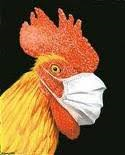
Virulent Newcastle disease is a highly contagious and deadly virus in birds; the virus is found in respiratory discharges and feces. Clinical signs in birds include:
- Sneezing, coughing, nasal discharge, green watery diarrhea, depression
- neck twisting, circling, muscle tremors, paralysis, decreased egg production
- swelling around eyes and neck, sudden death.
It is essential that all poultry owners follow good biosecurity practices to help protect their birds from infectious diseases such as virulent Newcastle. These include simple steps like washing hands and scrubbing boots before and after entering a poultry area; cleaning and disinfecting tires and equipment before and after moving them on/off the property; and isolating any sick birds. New or returning birds from shows should be isolated for 30 days before placing them with the rest of the flock.
For backyard flock owners, biosecurity measures include using dedicated shoes and clothes when caring for birds and not to use/wear those clothes/shoes in other areas.
In addition to practicing good biosecurity, all bird owners should report sick birds or unusual bird deaths through California's Sick Bird Hotline at 866-922-BIRD (2473). Additional information on VND and biosecurity for backyard flocks can be found at https://www.cdfa.ca.gov/ahfss/Animal_Health/Newcastle_Disease_Info.html
Click here for more information regarding vaccination of backyard birds.
Sick or dead backyard birds can be submitted to CAHFS laboratories for post-mortem examination ($20 plus shipping and handling). Information on this program can be found at:
https://www.cdfa.ca.gov/ahfss/Animal_Health/pdfs/CAHFS_NecropsyFactsheet.pdf
For additional information on who to contact for issues regarding backyard poultry, see:
http://ucanr.edu/sites/poultry/contact/
Virulent Newcastle disease is NOT a food safety concern. No human cases of Newcastle disease have ever occurred from eating poultry products. Properly cooked poultry products are safe to eat. In very rare instances people working directly with sick birds can become infected. Symptoms are usually very mild, and limited to conjunctivitis and/or influenza-like symptoms. Infection is easily prevented by using standard personal protective equipment.
- Author: Mary V Redlin
When you arrive at Wild Willow Farm & Education Center (WWF) it's hard to believe that you are merely miles from one metropolis – San Diego – to the north, and even closer to the bustle of Tijuana, Mexico to the south. The farm, operated by the non-profit organization, San Diego Roots Sustainable Food Project, calls 5.5 acres home in the Tijuana River Valley Regional Park, with about two acres currently under production.
The farm grows a variety of seasonal produce, herbs, flowers, and fruit, which they mostly sell through their “Farmshare CSA,” and a few wholesale restaurant accounts. A Saturday farm stand onsite is also in the works. However, ask founder and program manager Mel Lions what they really grow, and he'll tell you, “Farmers!”
The mission of the farm goes beyond growing food. WWF is a working educational farm that teaches and trains the next generation of farmers to be stewards of the land. They operate southern California's only soil-based farm school, with regenerative agriculture at the cornerstone. WWF offers weekly classes and workshops in food, community, and health-related topics, and four times a year they offer their signature six-week course, Farming 101: Introduction to Regenerative Farming. The course introduces students to basic principles and practices that focuses on transforming farms and food production into ecologically restorative, bio-diverse living landscapes best suited for small-scale production.
While much income for the farm is revenue generated by programs, funding always remains a challenge. The team at WWF depends on volunteer administrators, and part-time paid staff. In addition, lease restrictions inside the County Park prohibit traditional farm amenities, such as housing for staff and students. The County Park also only provides a five-year lease term, which limits long-term planning and investment in infrastructure upgrades.
In its eighth year of existence, WWF has weathered storms, which literally flooded the farm (as it sits in flood plain,) but they wouldn't want it any other way. WWF is a guaranteed breath of fresh air, and embraces all who are willing to make the trip off the beaten path.
Wild Willows Farm can be found at 2550 Sunset Avenue, San Diego, California 92154, or online at http://sandiegoroots.org/farm/farm-school.php. The farm's social media links are https://www.instagram.com/wildwillowfarm/ and https://www.facebook.com/wildwillowfarm.
Cathryn Henning is WWF's Farm Manager. You can email WWF at wildwillowfarm@sandiegoroots.org.



